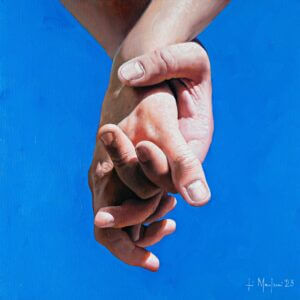Interferences, loss of signal, sudden changes of color, distorted images or sounds… These are only some of the small incidents – or glitches – that can happen with electronic equipment. And some people decided to turn them into art. Because machines, however close to perfection they may be, are produced by humans and are, therefore, fallible.
As a technical term, glitch denotes the unexpected, noticeable and more or less temporary malfunction of a device. We’ve all had the experience, for instance, of a temporary signal loss while watching a movie. Glitch art, just like glitch music, transforms these random and totally unpredictable events in something aesthetically and intellectually interesting. Come to think of it, technological evolution is an exhausting search for the reduction of errors. Some machines were created with the goal of replacing human labor, raising productivity and reducing the risk of mistakes (the so-called human error). Other devices, such as TV sets and telephones, are at out service, in which case error is fought for the sake of seamless functionality.
And yet errors, malfunctions and unexpected incidents happen all the time, reminding us of our intrinsic imperfection and bursting our illusion of omnipotence. Erring is indeed human.
Examples of glitch art are found throughout most of the 20th century and especially toward the end, when they really came into the spotlight, riding the boom of digital technologies and, consequently, of digital art.
The creative process of this particular art form consists in using a glitch, which can be either spontaneous or (more often) deliberately induced in order to achieve a specific effect, resulting into a distortion of static or moving images. When it comes to art, deformations always carry a meaning: think of the “discovery” of perspective lines during the Renaissance, which paradoxically create an illusion of realism. Or of the formal breakdown pursued by Cubism or Futurism, to mention just a few precedents. To de-form means to bring back the attention to form and therefore also to perception, forcing us to go beyond the obvious and to take up a destabilizing challenge.
This is precisely what Manuele Chan does in his Tremori: outlines are blurred and colors are shifted, in a very contemporary taste.
Life would be so boring without mistakes.


